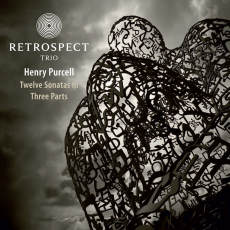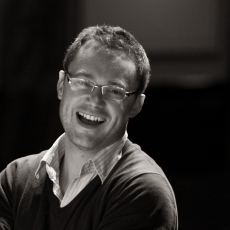Purcell: Twelve Sonatas in Three Parts - Audiophile Audition
Despite the fact that these composers hail from opposite ends of Europe, so to speak, there are some reasons that considering their works in a single review makes sense. First of all, both are far better known as composers for the voice than for instruments. Both were celebrated opera composers who set new standards in that medium for their compatriots and both were equally prized as composers of sacred music.
Another important connection between the composers is the Italian one: both composers were influenced by earlier Italian violinist-composers such as Giovanni Bassani and Arcangelo Corelli, who introduced a new style of playing, and thus writing, for string instruments. In Purcell's preface to the 1683 edition of his Twelve Sonatas, the composer professed that "he has faithfully endeavour'd to a just imitation of the most fam'd Italian Masters. . . ." Purcell went on to opine that such an attempt would elevate English music, bringing "the seriousness and gravity of that Sort of Musick into vogue, and the reputation among our Countrymen, whose humour, 'tis time now, should begin to loath the levity, and balladry, of our neighbors. . . ." While he doesn't make clear who those "neighbors" are, Purcell is apparently thinking of the French, whose music, until the "Italian invasion" of England, was the chief foreign influence. As Matthew Halls explains, "musical tastes at court still leant very much towards the French models, with a particular penchant for ‘theatricall musick' and the ‘French air in song'. . . ."
Yet as Halls goes on to write, what distinguishes Purcell's instrumental writing is not a wholesale abandonment of earlier models in favor of Italian ones but a successful fusion of French, Italian, and even native English musical styles, including the consort fantazia style represented by instrumental composers such as John Jenkins and Purcell's teacher, Matthew Locke. This style is largely responsible for the strained and sometimes dissonant harmonies in Purcell's Sonatas, but it's also wise to remember that the fantazia style is the product of an attempt to capture the emotionally-charged vocal writing of the madrigal in instrumental writing. Purcell, like other English composers going back to the Renaissance, wrote both madrigals and vocal music, and this kind of stylistic crossbreeding was a part of Purcell's DNA; it came naturally, while the imitation of the new Italian instrumental music did not.
The mixture of styles in the Sonatas does make for some fascinating listening. The slow music especially demonstrates that madrigal-like harmonic straining for effect, though some of the slow movements sound as if they could come right of the pages of an Italian sonata da chiesa. The highly contrapuntal faster movements bespeak the influence of Italian virtuosity, but some, like the Presto and the Allegro finale of Sonata II, jig along in a unique style that seems to mate French ballet and English courtly dance.
Maybe you'll hear something different as you listen to these works. Whatever your reaction, if you're a lover of Baroque music not familiar with the Sonatas, I think you'll find them fresh and uniquely satisfying in their inventiveness. This is an hour and more eminently well spent with the great Henry Purcell and friends, namely the Retrospect Trio, who play with style and verve galore. The choice of organ or harpsichord seems to me right on the money: the more somber-hued sonatas sound just right with organ continuo; the chipper Sonata II in B-flat Major and Sonata VI in C Major need the bright pinginess of the harpsichord to make their mark.
Wonderful SACD surround sound from St. George's Church in Cambridge-apparently not an overly large space, or else the Linn engineers have mastered it because the players are at just the right distance from the microphones so that the sense of presence is not compromised by the resonance of the setting. First-rate in every way.

